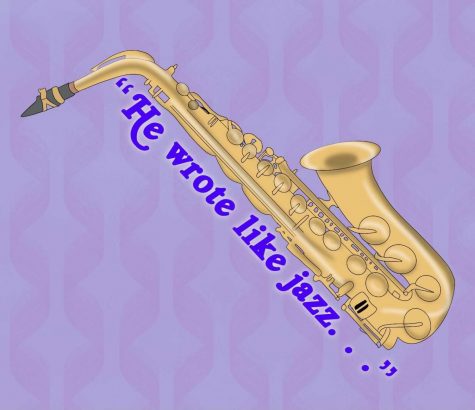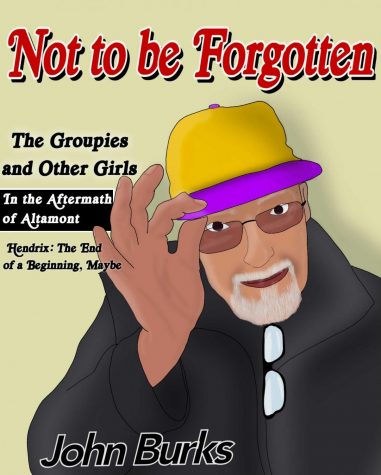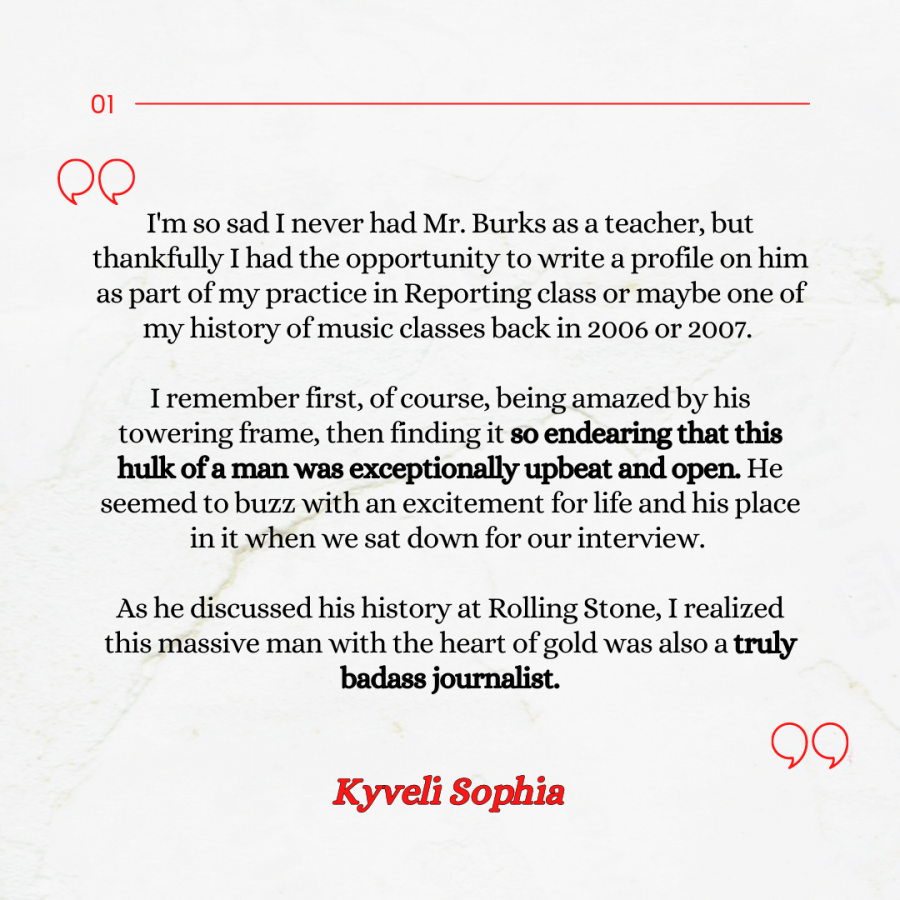
Susan Sutton teaches journalism to high schoolers at Archbishop Bruton High School. The dire situation her seniors are in — no sign of prom, graduation day and the like — made her want to share an old article with her students: the one where she met with several former internees of the Japanese American internment camps, whose senior year was also interrupted, albeit in a much graver way.
Sutton wrote the article, titled “Not to Be Forgotten,” back in ’97 as a senior and managing editor of SF State’s magazine, PRISM. As she scanned her physical copy of the article, she questioned if it was something even worth sharing.
“Self-doubt came up,” Sutton said. “I don’t know, I wrote this in college. Is this good enough to share with my students? What if they don’t like it?”
Then, she remembered — the difficulty of interviewing sources for such an intimate story was met with patience and understanding from the magazine’s adviser, John Burks.
“Meeting with former Japanese American internees was emotional, and those I interviewed were more prepared to talk about their experiences than I was to hear about them, but John had prepared me for that with his focus on not only telling the story, but understanding the people behind the story,” Sutton said.
John Burks passed the same day she found the article on Feb. 17, 2021: 83 years old, from heart disease.
Burks, former chair of the SF State journalism department, sustained 30 years’ worth of influence on journalism students as a professor before his retirement in 2011.
I asked Mr. Burks for advice. ‘The reporting will take care of the writing. Report the hell out of it, Jose.’ I never forgot it.
— Jose Antonio Vargas
To people like Sutton who developed close relationships with Burks, he’d been described as a giant in every sense of the word — from his 6-foot-7-inch stature to his impressive indent on the new age journalism scene.
Sutton is one of many alumni who have a deep appreciation for Burks’ teachings. He was the one who encouraged her to retreat out of her shell and embrace the ebb-and-flow that journalistic writing could be if one leans into it enough. When she was a budding journalist, Burks was the school magazine’s adviser and a constant presence for Sutton.
After his passing, journos from all walks of their career paid their condolences.
“John once told me to say what you mean in as few words as possible and always mean what you say. I carried that advice with me every day during my 30-year journalism career,” said former student Robert Slager.
“I was a freshman and just landed my first summer internship for a major paper: Philly Daily News. I was nervous because writing wasn’t my strongest suit — as an immigrant, English was my second language,” student Jose Antonio Vargas said. “I asked Mr. Burks for advice. ‘The reporting will take care of the writing. Report the hell out of it, Jose.’ I never forgot it.”

Miles Davis had his trumpet, Thelonious Monk had his keys and Burks had his words; which he strung together like a walking bass line keeping rhythm. His writing mirrored the way he spoke, which only further reflected the cool, melodic tunes he’d keep on a loop in his office.
Music followed Burks everywhere. He was the music, said Rachele Kanigel, former student and current chair of the SF State journalism department.
“Jazz was a very big part of who he was, and he wrote like jazz,” Kanigel said. “Very jazzy kind of writing style.”
As the first managing editor of the Rolling Stone, his encounters with music stars like Louis Armstrong, Bob Dylan, John Lennon and others often seamlessly slipped into conversations with students.
“We were in awe of him all the time, and I don’t think he was aware,” Sutton said. “I think he was just such a humble person, he might have been completely unaware of how awesome he really was.”
Other journalistic medals of honor include: interviewing Jim Jones before Jonestown; having a chat with Jimi Hendrix before his fatal overdose; and receiving a National Magazine Award for his investigative coverage on murder at Altamont.
LISTEN: Burks speaks with an SF State student journalist in 2011 about his experience interviewing Jim Jones.
He was never one to name drop for status’ sake, however, Sutton said.
That’s one of the reasons why Burks’ career at the Rolling Stone was brief, actually. Don Menn, former SF State professor, mentee and lifelong friend of Burks, recalled how he called publisher and founder Jann Wenner a groupie for feeding into youth interests without covering youth culture itself.
“John came in and was trying to get him to focus on youth culture, rather than putting somebody like Bob Dylan on the cover of the magazine after because he has a new record out,” Menn said. “He was trying to get back to writing about youth rebellion on campuses, diversity, you know, identity politics, the anti-war stuff. So he pissed a lot of people off.”

Before Burks began teaching in ’78, the kids of the SF State journalism department mostly knew of news writing as an objective (sometimes monotonous) way of spreading information. When he stepped foot on campus, the colorful world of magazine writing followed in suit.
Students had the chance to swap out AP Stylebook with Chicago Manual, transforming he-said-she-said articles to sprawly narrative pieces. Burks’ courses were specifically geared for the long-form journalism pioneered by Esquire Magazine and Clay Felker.
The introduction to this new form of journalism wasn’t fully met with smiles and rainbows from long-standing department veterans, however. With time and convincing, the magazine sequence was born, thanks to Burks.
“He was a persistent bulldozer who still had a soft touch in such a way that he didn’t have to have a slugfest to win, he would just kind of out-think people,” Menn said. “And he never raised his voice.”
His classes were a “safe haven” for writers that dreamt beyond the cut-and-dry formula of reporting, according to Kanigel.
“You would take his magazine class, and you would learn how to find your voice, you would learn how to write in a much more distinctive way, a more descriptive way, a way to have much more personality,” Kanigel said. “For a lot of students probably, myself included, that was a real breath of fresh air.”
Menn described the first day of school as a “horse race” because students stampeded toward PRISM, now known as Xpress Magazine, in hopes to secure a spot as a magazine writer.
“It was cataclysmic for the department from some people’s point of view, because it became the most popular sequence,” Menn said. “The newspaper suddenly didn’t have enough people who wanted to be on the newspaper.”
Burks’ retirement left Menn to hold the pieces of the magazine sequence together. As new instructors introduced different elements of journalism and multimedia made its way into the department, magazine writing began to fizzle out.
“As they say, it’s a great arrow to have in your quiver, but it basically annihilated magazine style writing,” Menn said. “When I was overseeing the magazine, I was getting people who didn’t even know what an anecdotal lead was to a story.”
In February, Kanigel found herself the writer of Burks’ obituary for the department’s site. The role came with great responsibility and brought back fond memories of her own time as a student. As a former news reporter of 15 years, dipping back into narrative writing for Burks’ sake felt just like that breath of fresh air he brought into the department 30 years ago.
“I was thinking, well, let’s see, the purpose of this piece is not to write a kind of straight ahead piece, but looking for ways to use narrative writing to tell a story — to set a scene,” Kanigel said.
She remembered fellow students receiving a flood of comments and feedback on each assignment they turned in. The notes were always less of a critique and more of a conversation. That was her scene to set, exactly in the way Burks taught her.
The letter on each student’s assignment didn’t really matter. It was the comments scrawled at the top, in the margins, between the lines, on the back of the paper, anywhere he could fit them. He ‘graded’ like an editor, prodding his students to do more reporting, to find a more telling detail, to search for a snazzier verb.
— Rachele Kanigel
Menn said he knew the day would eventually come when Burks died, but he never pictured how he would cope with this loss. Burks was one of his favorite people on Earth, he said.
“I didn’t know who to call after I got the email from Rachele, because a lot of the people I was going to call were either retired, dead or wouldn’t have known him,” Menn said. “There was no way I was going to call up somebody who I knew had very mixed feelings about him and pour my heart out.”
It’s been two months now, but his presence is still very much here in the department, sustained through the former students who carry his lessons with them in the ways they teach.
Memorial donations can also be made to the journalism department’s Student Professional Development Fund in his honor.
Burks donated his skin to burn victims before being cremated. The family hopes to hold a memorial service sometime in the future, post-pandemic.
“John’s legacy is more history now than an ongoing story, but the people who remember him remember him well,” Menn said.
He’s “Not to be Forgotten,” by the ones he came across and the ones who followed after.










Susan Sutton • Feb 9, 2024 at 9:33 pm
Thank you for this lovely story on my mentor and friend John Burks. He is a constant presence in my life in regards to the world of journalism, and his gentle nature and infinite wisdom are deeply ingrained in my approach to the craft of writing as well as life in general.